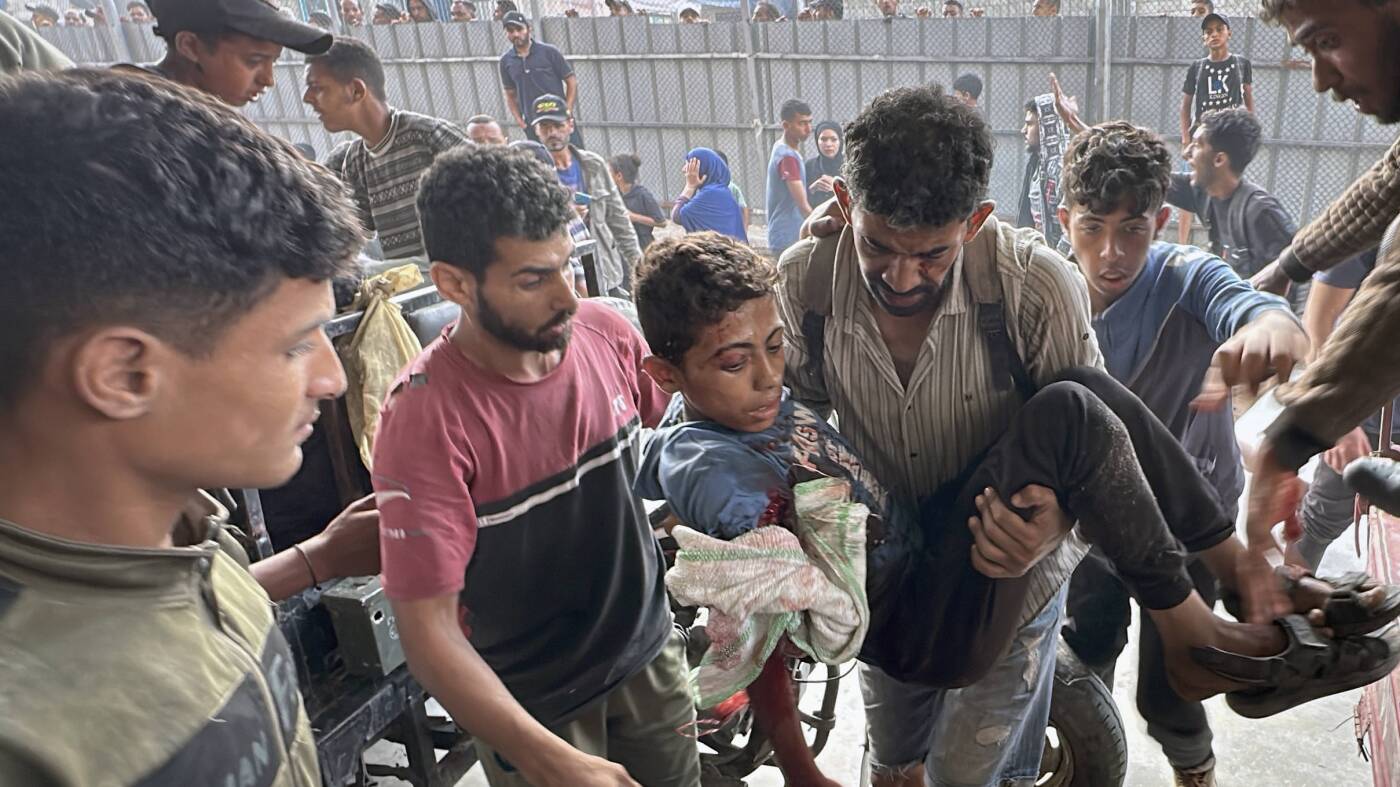The Descent into Chaos: Gaza’s Humanitarian Catastrophe
A Grim Portrait
Gaza is in the throes of a multifaceted crisis, with a surging death toll, impending famine, and a complex geopolitical backdrop as Israel’s attention shifts towards Iran. While the specter of direct conflict with Iran looms, the humanitarian disaster in Gaza is a pressing and escalating tragedy. The territory is on the precipice of famine, with half a million people already facing starvation. This report delves into the current state of affairs, drawing from recent news coverage, and examines the interplay between Israel’s strategic priorities and the worsening humanitarian disaster.
The Depth of the Humanitarian Crisis
Starvation and Famine
The most pressing concern is the widespread starvation gripping Gaza. Reports from independent hunger experts confirm that half a million people are already experiencing starvation—not a future threat, but a current reality. The entire territory is on the brink of famine, signaling a complete collapse of essential life support systems. This food insecurity is exacerbated by a healthcare system on the verge of collapse, with hospitals crippled by the blockade of medical supplies.
The Health Ministry’s urgent appeals highlight a critical decline in blood donations, further straining the ability to treat the wounded and sick. The sheer number of casualties is overwhelming the already strained medical infrastructure. Recent weeks have seen dozens die from starvation-related causes, including children and the elderly.
Trauma and Displacement
Beyond starvation and lack of medical care, the civilian population faces immense trauma and displacement. Relentless bombardment and ground operations have created a landscape of destruction, forcing countless individuals to flee their homes and seek refuge in overcrowded shelters. The psychological toll of this displacement is immense, adding to the already overwhelming humanitarian burden.
Escalating Violence and Civilian Casualties
Deadliest Days
While Israel’s focus has shifted towards Iran, military operations within Gaza continue, contributing significantly to the escalating death toll. Recent reports indicate that Tuesday was one of the deadliest days in recent weeks for Palestinians attempting to reach food distribution sites. Multiple sources report that Israeli forces killed over 50 aid seekers in Khan Younis, with at least 20 people killed while waiting for food aid. These incidents highlight the perilous conditions faced by civilians simply trying to access essential resources.
Staggering Death Toll
The overall death toll in Gaza is staggering, rapidly approaching 20,000. This figure dwarfs the casualties of previous conflicts and exceeds the death rate observed in Ukraine. The scale of death and destruction is immense, leaving a lasting scar on the region. Reports of civilian deaths around relief efforts suggest a pattern of violence disproportionately impacting the most vulnerable populations.
Geopolitical Strategy and Humanitarian Impact
Shifting Focus
Israel’s strategic focus on Iran is undeniably impacting the situation in Gaza. While attention is diverted to potential escalation with Iran, Israeli troops remain deeply entrenched within Gaza, and operations continue to claim civilian lives. The U.S., while reaffirming its support for Israel’s right to self-defense, has expressed concern over the mounting civilian death toll and urged Israel to scale back its offensive.
Regional Dynamics
The attacks on Iran and subsequent retaliations have created a volatile regional dynamic. This heightened tension risks diverting international attention and resources away from the humanitarian crisis in Gaza. The focus on preventing a wider Middle East war, while crucial, cannot come at the expense of addressing the immediate needs of the Gazan population.
International Criticism
The conflict has sparked widespread criticism of Israel’s actions, with some accusing them of waging a “war on children” and employing tactics amounting to extermination and acts of genocide. These accusations, while highly charged, reflect the depth of concern surrounding the humanitarian consequences of the conflict.
The Blockade and Aid Obstruction
Critical Factor
A critical factor exacerbating the crisis is the ongoing blockade of Gaza. This long-standing policy, intensified during the current conflict, severely restricts the flow of essential goods, including food, water, medicine, and fuel. Reports highlight the deliberate cutting off of water supplies and the obstruction of aid deliveries, rendering the situation even more dire.
International Calls
The international community has repeatedly called for increased humanitarian access to Gaza, but these calls have largely gone unheeded. Obstacles to delivering aid are numerous, ranging from bureaucratic hurdles and security concerns to deliberate restrictions imposed by Israeli authorities. This obstruction of aid is a significant contributing factor to the widespread starvation and suffering.
A Future Hanging in the Balance
Immediate Priorities
The convergence of escalating violence, a shifting Israeli focus, and a crippling humanitarian crisis paints a bleak picture for the future of Gaza. The immediate priority must be to alleviate the suffering of the civilian population. This requires a significant increase in humanitarian aid, a lifting of the blockade, and a commitment to protecting civilians.
Long-Term Solutions
However, addressing the immediate crisis is only the first step. A lasting solution requires a comprehensive political settlement that addresses the root causes of the conflict and ensures the long-term security and well-being of both Israelis and Palestinians. Without such a settlement, the cycle of violence and suffering will inevitably continue, and the humanitarian crisis in Gaza will remain a persistent and tragic reality.
Conclusion: A Call to Action
The current situation in Gaza demands not only a cessation of hostilities but also a fundamental reassessment of the policies and practices that have contributed to this devastating outcome. The international community must step up its efforts to provide immediate relief and work towards a lasting peace. The future of Gaza hangs in the balance, and the world cannot afford to look away. The time for action is now, before the crisis reaches an irreversible point. The lives of half a million people depend on it.

